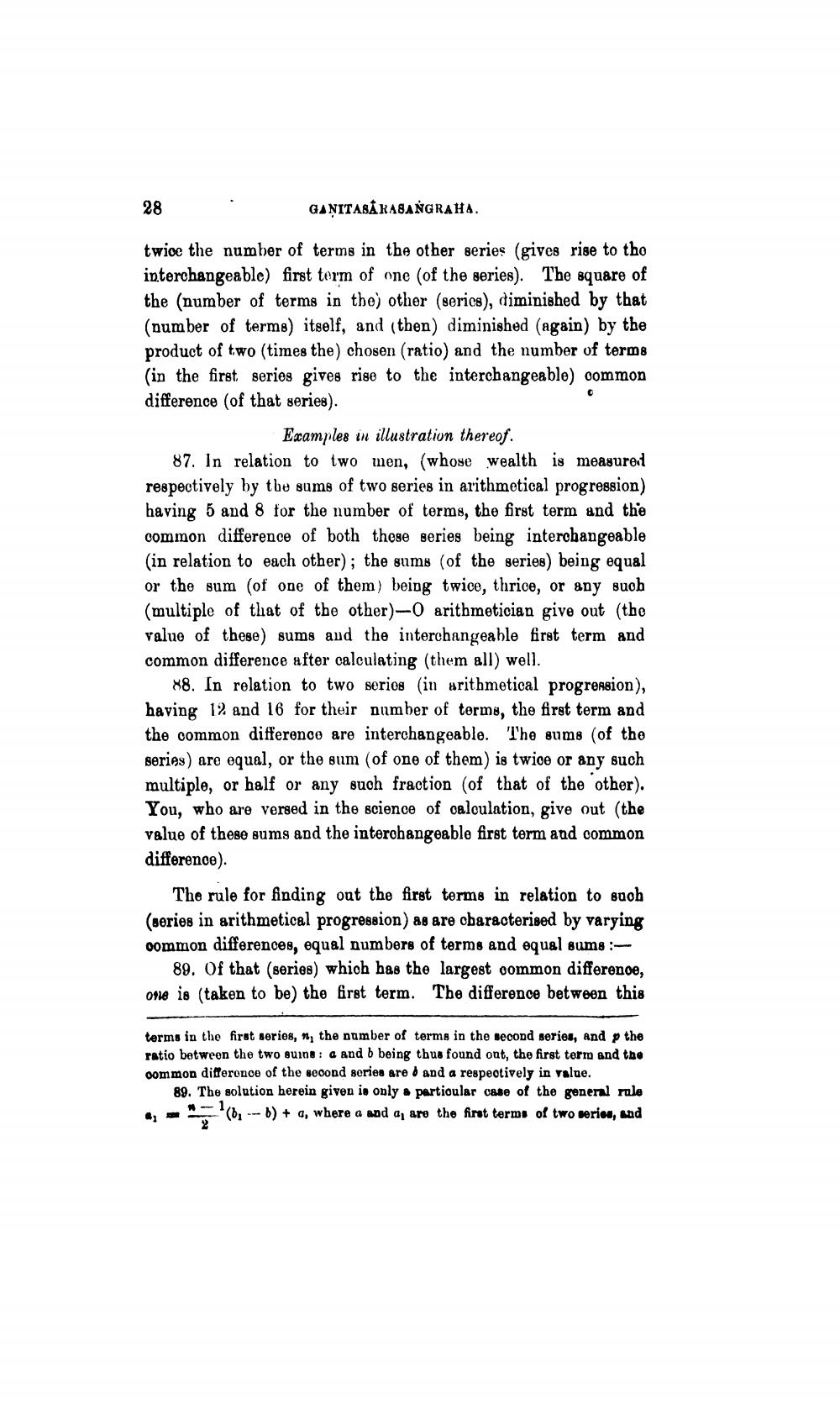________________
28
GANITASARASANGRAHA.
twice the number of terms in the other series (gives rise to the interchangeable) first term of one of the series). The square of the (number of terms in the) Other (serics), diminished by that (number of terms) itself, and (then) diminished (again) by the product of two (times the) chosen (ratio) and the number of terms (in the first series gives rise to the interchangeable) common difference (of that series).
Examples in illustration thereof. 87. In relation to two men, (whose wealth is measurert respectively by the sums of two series in arithmetical progression) having 5 and 8 for the number of terms, the first term and the common difference of both these series being interchangeable (in relation to each other); the sums (of the series) being equal or the sum of one of them) being twice, thrice, or any such (multiple of that of the other)-0 arithmetician give out (the value of these) sums aud the interchangeable first term and common difference after calculating (them all) well.
*8. In relation to two serios (in arithmetical progression), having 12 and 16 for their number of terms, the first term and the common difference are interchangeable. The sums (of the series) are equal, or the sum of one of them) is twice or any such multiple, or half or any such fraction (of that of the other).
You, who are versed in the science of calculation, give out (the value of these sums and the interchangeable first term and common difference).
The rule for finding out the first terms in relation to such (series in arithmetical progression) as are cbaracterised by varying oommon differences, equal numbers of terms and equal sums :
89. Of that (series) which has the largest common difference, one is taken to be the first term. The difference between this
terms in the first series, n, the number of terms in the second series, and p the ratio between the two euins : G and b being thus found ont, the first term and the oommon differonce of the second series are 8 and a respectively in value.
89. The solution herein given is only partioular case of the general rule *, ** (, --- ) + a, where a and an are the first terms of two verios, and




